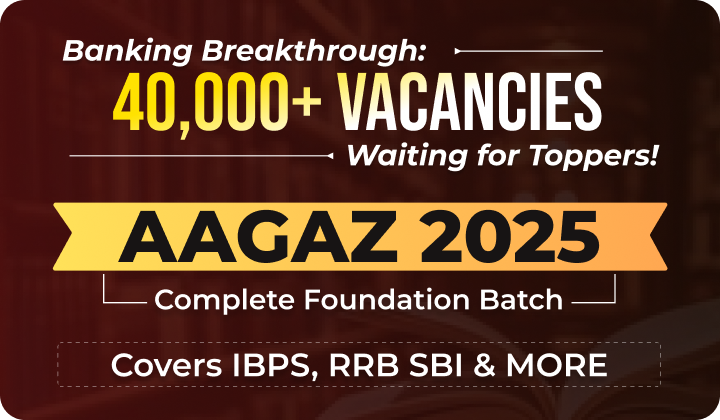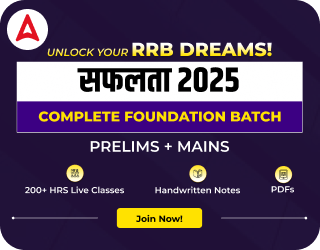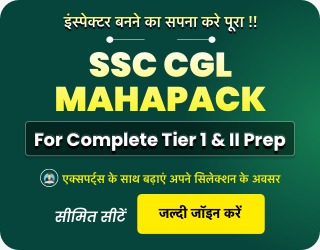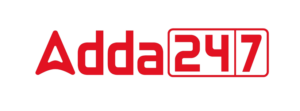Table of Contents
Kerala PSC KWA Lab Assistant Syllabus 2024
The Kerala Public Service Commission is going to organize the Kerala Water Lab Assistant Exam 2024 and it is expected to be held in February 2024. Candidates who are going to appear in the exam should know the Kerala PSC KWA Lab Assistant Syllabus 2024. The syllabus structure will help the candidates to prepare for the examination. The Kerala PSC KWA Lab Assistant Syllabus PDF link has been provided below in the article.
Kerala PSC KWA Lab Assistant Syllabus 2024-Overview
The Kerala PSC KWA Lab Assistant Exam is going to be held to recruit eligible candidates for the Lab Assistant in the Kerala Water Authority department. The examination will be held in online mode. For more details use the table below.
| Kerala PSC KWA Lab Assistant Syllabus 2024 | |
| Organization | Kerala Public Service Commission |
| Category | Syllabus |
| Post Name | Lab Assistant |
| Exam Mode | Online |
| Language | Malayalam |
| Marks | 100 |
| Time Limit of Examination | 1 hour 15 minutes |
| Official Website | www.keralapsc.gov.in |
Kerala PSC KWA Lab Assistant Exam Pattern 2024
The expected exam pattern for the Kerala PSC KWA Lab Assistant Exam 2024 is given below. It will help the candidates to have an idea about the marks distribution for each subject.
- The exam is conducted for a maximum of 100 marks.
- The time duration of the exam is 1 hour and 30 minutes or 90 minutes.
- The mode of the exam is online, and it follows an objective multiple-choice format.
- The medium of the exam is English.
| Name of Subject | Duration | Number of Marks |
|---|---|---|
| Basic Laboratory Techniques | 1 Hour 30 Minutes | 100 Marks |
| Blood and Phlebotomy | ||
| Hematology | ||
| Blood Banking and Immuno Hematology | ||
| Clinical Pathology | ||
| Biochemistry | ||
| Microbiology | ||
| Parasitology | ||
| Histotechnology and cytology histotechnology | ||
| Physics | ||
| Chemistry | ||
| Botany | ||
| Zoology | ||
| Mathematics |
KWA Lab Assistant Syllabus for Physics
The KWA Lab Assistant Syllabus for Physics is given below. Candidates can check the topic-wise KWA Lab Assistant Syllabus for Physics here.
| Unit | Topics |
|---|---|
| Units and Measurements | System of Units – CGS and S.I System, Multiples & sub multiples of the unit, Parallax method – for measurement of large distances, Significant figures, Accuracy and Precision, and Errors in measurement and Calculation. |
| Kinematics | Motion in a straight line and plane, Graphical representation of motions, Position time graph and velocity-time graph, Equation of motion, Displacement and distance, Velocity and acceleration, Vector addition – Triangular law and Parallelogram law, Uniform circular motion – Centripetal force and acceleration. |
| Dynamics | Laws of Motion and Work, Energy & Power, Newton’s laws of motion, Impulse and its application, Law of conservation of momentum – Recoil of gun, Friction – Laws of static and kinetic friction, angle of repose, Methods of reducing friction, Different types of work, Kinetic and Potential energy, Power, and Collision – Elastic and Inelastic collision. |
| System of Particles and Rotational motion & Gravitation | Law of conservation of angular momentum and its application, Torque and Angular momentum, Moment of Inertia of regular bodies – Ring, disc, sphere, and Cylinder, Theorem on Moment of Inertia – Parallel axes and Perpendicular axes, Kinetic energy of rolling bodies, Acceleration due to gravity (g) and its variation with depth and height, Orbital velocity and period of satellite, Escape velocity, and Kepler’s third law. |
| Mechanics of Solids and Fluids Elasticity | Stress and strain, Moduli of elasticity – Young, Bulk, and rigidity, Stress-strain graph, Fluid pressure, Pascal’s law and its applications, Surface tension, Viscosity, Bernoulli’s theorem and its application, Equation of continuity, and Terminal velocity. |
| Heat and Thermodynamics | Principle of mixture, Scales of temperature, Specific heat capacity, First and second law of thermodynamics, Isothermal and adiabatic process, and Carnot’s Heat engine, |
| Oscillation & Waves | Simple Harmonic Motion (SHM), Simple pendulum, Longitudinal and transverse waves, Vibration in air column – Open pipe and closed pipe, and Beats and Doppler effect. |
| Electrostatics | Quantization of charge, Coulomb’s law, Electric field, Gauss’s theorem and its application, Equipotential surfaces, Capacitance, Parallel plate capacitor, and Combination of capacitors – series & Parallel. |
| Electro dynamics | Current Electricity- Ohm’s law, Electric current and current density, Color code of resistors, Resistivity and conductivity, Drift velocity and mobility, and Potentiometer. |
| Moving charges and magnetism | Biot-Savart’s law and its application – circular coil, Solenoid, and Toroid, Galvanometer to ammeter and voltmeter, Classification of magnetic materials – dia, para, and ferro materials, and Magnetic field lines. |
| Electromagnetic induction & AC | Faraday’s laws, Eddy current and its applications, Self-induction, AC generator, Transformers, Wattless current and Qfactor of LCR circuit, and Reactance of AC circuits. |
| Electromagnetic waves | Properties of Electromagnetic waves and their uses, Electromagnetic spectrum, Ray and Wave optics, Reflection of spherical mirrors, Refraction and its application, Total internal reflection and its applications, Lens maker’s formula, Power of a lens, Combination of lens, Scattering and dispersion, Microscope, Interference – Young’s double-slit experiment, and Polarisation – Malu’s law and Brewster’s law. |
| Modern Physics | Dual nature of radiation & matter, Atoms & nuclei- Photoelectric effect, Einstein’s Photoelectric equation, Matter waves, Bohr atom model – Spectral series of the Hydrogen atom, and Half-life period and nuclear reactor. |
| Semiconductor physics | Concept of Energy band – Classification of materials – conductor, insulators, and semiconductors, Properties of semiconductors, Dopping, Intrinsic and extrinsic semiconductors, N-type and P-type semiconductors, P N junction diode, Half-wave and full-wave rectifiers, Zener diode, Photodiode and LED. |
| Ray and Wave Optics | Reflection of spherical mirrors, Refraction and its application, Total internal reflection and its applications, Lens maker’s formula, Power of a lens, Combination of lens, Scattering and dispersion, Microscope, Interference -Young’s double slit experiment, Polarisation -Malu’s law and Brewster’s law. |
KWA Lab Assistant Syllabus for Chemistry
The KWA Lab Assistant Syllabus for Chemistry is given below. Candidates can check the topic-wise KWA Lab Assistant Syllabus for Chemistry here.
| Topics | Sub-Topics |
| Physical Chemistry | Mole concept calculations, definition of molarity, molarity calculations, atom structure with different models like Rutherford and Neils Bohr, concepts of orbitals, quantum numbers, shapes of s, p, and d orbitals, rules for filling electrons in orbitals, equilibrium with the concept of pH, electrochemistry with different types of electrochemical cells (Galvanic, also called voltaic and electrolytic), and surface chemistry involving colloids and emulsions with examples of colloids found in our surroundings. |
| Inorganic Chemistry | Periodic classification of elements- Modern periodic table and the present form of periodic table, periodic trends in properties and their variation along a group and period with reason– atomic radii, electronegativity, Hydrogen – Types of water- Hardness of water-causes of hardness and its removal, Hydrogen peroxide, S-block elements -Biological importance of sodium and calcium, P-Block elements- Allotropes of diamond and Graphite their structure and properties, Compounds of nitrogen –Ammonia and Nitric acid, compounds of Sulphur sulphuric acid, and Applications of d & f block elements. |
| Organic Chemistry | Organic chemistry some Basic principles and techniques, IUPAC nomenclature of organic compounds, Different methods used for the purification of organic compounds distillation, crystallization, sublimation, Hydrocarbons –General formula of alkanes, Test for alcohols, phenol, aldehydes, ketones, Alcohol -Isopropyl alcohol, glycerol Chemistry in Everyday life– Chemistry in food, medicines (Antiseptic, antibiotic), cleansing agents, Biomolecules-Carbohydrates, proteins, vitamins, nucleic acids, Polymers-Polystyrene, Polyurethane, Silicones, Polycarbonates, Polyether, and Polyester. |
KWA Lab Assistant Syllabus for Botany
Candidates can check the detailed KWA Lab Assistant Syllabus for Botany 2024 in the table below.
| CELL STRUCTURE AND FUNCTION | |
| Cell the Unit of Life | Cell Theory, Prokaryotic and Eukaryotic Cells, and Cell Organelles (Structure and Function). |
| CELL CYCLE AND CELL DIVISION | |
| Cell Cycle | Phases of Cell Cycle, Interphase, Mitosis, and Meiosis. |
| REPRODUCTION | |
| Reproduction in Organisms | Asexual Reproduction (Methods), Vegetative Propagules, Sexual Reproduction (Events), Ovipary, and Vivipary |
| SEXUAL REPRODUCTION IN FLOWERING PLANTS | |
| Stamen, Microsporangium, Pollen Grain | Structure and Development |
| Pistil, Megasporangium (Ovule) | Structure and Development |
| Pollination | Outbreeding Devices |
| Artificial Hybridization | |
| Double Fertilization | |
| Endosperm, Embryo, Seed | |
| Apomixis, Polyembryony | |
| BIOLOGY IN HUMAN WELFARE |
STRATEGIES FOR ENHANCEMENT IN FOOD PRODUCTION
|
KWA Lab Assistant Syllabus for Biotechnology
Check the topic-wise Biotechnology syllabus in the table below.
| Topic | Sub-topic |
| BIOTECHNOLOGY PRINCIPLES AND PROCESSES | Principles of biotechnology, Tools of recombinant DNA technology, Separation and isolation of DNA fragments (Gel electrophoresis), Cloning vectors, Process of recombinant DNA technology – Isolation of DNA, Amplification of gene of interest using PCR, Obtaining foreign gene product, and Downstreaming process. |
| BIOTECHNOLOGY AND ITS APPLICATIONS | Biotechnological applications in agriculture, Biotechnological applications in medicine, Transgenic animals, and Ethical issues. |
KWA Lab Assistant Syllabus for Ecology
Check the detailed and topic-wise KWA Lab Assistant Syllabus for Ecology in the table below.
| Topic | Subtopics |
|---|---|
| ORGANISMS AND POPULATIONS | Organisms and their environment, Abiotic factors, Response to abiotic factors, Adaptations, Populations, Population attributes, Population growth, Life history variation, Population interactions |
| ECOSYSTEM | Structure and Function, Productivity, Decomposition, Energy flow, Ecological Pyramids, Ecological Succession, Hydrarch Succession, Xerarch Succession, Nutrient cycling |
| ENVIRONMENTAL ISSUES | Pollution, Air, Water, Greenhouse effect and global warming, Ozone depletion, Deforestation, Reforestation, People’s participation in conservation of forests |
KWA Lab Assistant Syllabus for Zoology
The KWA Lab Assistant Syllabus for Zoology has been shared below. Zoology is one of the most wide topics in this exam and encompasses a variety of topics.
| Topics | Subtopics |
| HUMAN PHYSIOLOGY DIGESTION AND ABSORPTION | Parts of the Human Digestive system, Mechanism of Carbohydrate, Protein, and fat digestion |
| BREATHING AND EXCHANGE OF GASES | Parts of the Human Respiratory system, Mechanism of Breathing in man, Transport of Carbon dioxide and Oxygen in blood |
| BODY FLUIDS AND CIRCULATION | Structure of Human heart, Cardiac cycle, ECG |
| EXCRETORY PRODUCTS AND THEIR ELIMINATION | Parts of the Human kidney, the Process of Urine Formation, Hormonal regulation of Kidney Function |
| LOCOMOTION AND MOVEMENT | Three types of muscles, Mechanism of muscle Contraction, Human skeleton, Types of Joints |
| NEURAL CONTROL AND COORDINATION | Structure of Neurons, Parts of the human brain, Structure of Eye and Ear |
| CHEMICAL COORDINATION AND INTEGRATION | Endocrine glands, hormones, and their functions |
| HUMAN REPRODUCTION | Structure of Male and Female reproductive system, Gametogenesis, Fertilization, Implantation, Functions of Placenta, Embryonic development |
| REPRODUCTIVE HEALTH | Sexually transmitted diseases, Contraceptives, Assisted Reproductive Technologies |
| GENETICS | – |
| HEREDITY AND VARIATION | Non-Mendelian inheritance – Codominance, Multiple alleles Chromosomal and Mendelian disorders, Sex determination in humans |
| MOLECULAR BASIS OF INHERITANCE | Structure and functions of DNA, Central Dogma-Transcription and Translation, DNA Fingerprinting |
| BIOLOGY IN HUMAN WELFARE | – |
| HUMAN HEALTH AND DISEASES | Types of Immunity, Immune system of the human body, Allergy, AIDS, Cancer |
| ANIMAL KINGDOM | Characteristic features and examples of different phyla (Porifera, Coelenterate, Platyhelminthes, Aschelminthes, Annelida, Arthropoda, Mollusca Echinodermata, Chordate) |
KWA Lab Assistant Syllabus for Mathematics
- Sets (Type of sets, subset, set operations etc.
- Relations (Type of relations ,Number of relations from a set A to B etc.)
- Functions ( Type of functions ,Domain and range etc. )
- Factorial of numbers (Position of a word ,Number of arrangements etc. )
- Progression( Arithmetic Progression ,Geometric progression)
- Trigonometry (Questions based on standard results and values)
- Conic (Latus rectum ,eccentricity ,focus etc. of ellipse ,Parabola )
- Vector (Perpendicular vector ,Parallel vector ,dot product)
- Derivatives (Derivatives of some standard functions)
- Straight Line (slope ,intercept etc.)
KWA Lab Assistant Syllabus for MLT
There is one special section for the job-related topics for 50 marks. There are many modules in this section. Candidates can check the syllabus for the KWA Lab Assistant in the table below.
| Module | Syllabus |
|---|---|
| Module 1 (10 Marks) | BASIC LABORATORY TECHNIQUES: • Knowledge of Laboratory chemicals- hazard symbols, warning symbols, safety precautions and storage of chemicals • Cleaning of glassware – general glass wares, new glass wares, blood- stained pipettes, slides, culture plates etc. • Cleaning and disinfection of Disinfectants used and biosafety precautions in case of specimen spillage • Bio- medical waste management -categories of bio-medical waste. Bio- medical waste – color coding, types of containers, collection, transport and disposal of biomedical waste. • Basic first aid techniques for cuts & bruises, burn injury etc. • Sample collection and processing – barcoding, safety precautions, processing of samples etc. • Common Instruments used in laboratories – incubators, centrifuge, semi autoanalyzer, Colorimeter, Micropipettes etc • Distillation and deionisation apparatus and use • Laboratory management system |
| Module 2 (13 Marks) | BLOOD AND PHLEBOTOMY – 10 Marks • Methods of blood collection – o Capillary Puncture o Arterial puncture and venous puncture o Vacutainer – colour codes for vials • Sites of blood collection: Capillary and Venous. • Anticoagulants used – advantages and disadvantages • Identification of blood cells: Leishman’s staining procedure & identification • Blood cell types: RBC, WBC, Platelets (Identifying characters and Normal Range ) HEMATOLOGY • Heamocytometry Counting chamber : improved Neubauer • Total cell counts: • RBC, WBC, Platelet, Absolute Eosinophil count. (Diluting fluids, Normal value, Clinical Significance), • Reticulocyte count : Clinical significance • Hemoglobin estimation : Enumerate methods ,WHO recognized method : cyanmethhaemoglobin method, significance. • PCV – Methods, Wintrobe ‘s method, Normal value clinical significance. • ESR- Method (westergren’s method), Normal value, Clinical Significance. • Test for coagulation: • Bleeding time methods & Normal value of Duke’s method. • Clotting time methods & Normal value of Capillary tube method • Automation- Heamotology analyser, Haemogram, CBC – principle BLOOD BANKING AND IMMUNO HAEMOTOLOGY – 3 Marks • Blood group antigens and antibodies. • Blood group system. (ABO and Rh system in detail,) • Blood grouping techniques. 1. Cell grouping and Serum grouping. 2. Slide and tube method Transfusion phlebotomy • Donor screening, Donor selection criteria. • Blood bank-Anticoagulants • Compatibility testing and issue of blood. • Cross matching-Minor and Major. Mention 3 phases |
| Module 3 (15 Marks) | CLINICAL PATHOLOGY – 5 Marks • Analysis of Urine, Sputum, Stool, Semen, CSF • -Types of sample, collection of sample, Physical, Chemical & Microscopic examination techniques & their Importance BIOCHEMISTRY – 10 marks Blood Glucose estimation • Types of samples: FBS, PPBS ,RBS • Methods of estimation – enzymatic method and glucometer (dry chemistry) • Normal value, • Clinical significance, • Relevance of HbAlc Renal function test • Enumerate the common test included. • Common method used for the estimation of Blood urea, Serum creatinine (normal values). Clearance test (Urea & Creatinine) Liver function test • Common tests included. Method used for estimation of Bilirubin (Malloy and Evelyn method) • Lipid profile Tests included in lipid profile • Common method for the estimation of cholesterol. Other parameters of Diagnostic importance. • Serum electrolytes: Sodium, Potassium. Normal value and Clinical significance. • Name cardiac Markers. • Name Tumourr Markers. • Clinically important hormones & enzymes Automation in Biochemistry • Types of analyser, various Assay techniques, POCT etc |
| Module 4 (12 Marks) | MICROBIOLOGY – 5 Marks • Classification of bacteria based on Morphology. Sterilization methods. • Hot Air Oven, Autoclave (Operation procedure , preparation of articles ,precautions to be taken and use) • Disinfectants & Antiseptics (Application) • Culture Media: Classification of culture media with example ( knowledge assessment) • Culture Methods: Streak, Stroke, Stab, Lawn culture, Anaerobic technique (gaspak) (Knowledge assessment) Identification of bacteria : • Different methods . • Detection of motility : Names of different methods (Hanging Drop Method ) • Staining : (Simple stain, gram stain, AFB stain)- techniques and diagnostic significance. • Biochemical tests : Oxidase, Coagulase, Catalase, & IMViC • Serological techniques- Agglutination test- Widal test , Precipitation test- RPR/VDRL, ELISA, PCR Parasitology – 2 Marks Laboratory diagnosis of Malaria • Disease, Mode of transmission, host, causative agent & types of Malaria • Thick and thin smear preparation – advantages and disadvantages • Stains used: Leishman, fildes JSB etc • Other methods : card method , QBC. Laboratory Diagnosis of Filariasis . • Disease, mode of transmission, host and nocturnal habit. • Lab diagnosis : Wet smear examination , thick smear examination, concentration techniques. Histotechnology and cytology histotechnology : – 5 Marks Tissue processing (steps of tissue processing), fixation techniques, Histokinette, Microtomes, staining: (H and E stain) Diagnostic cytology : Types of specimen , Processing , Fixation (fixatives used), Staining, advantages and application of diagnostic cytology |
Kerala PSC KWA Lab Assistant Syllabus 2024 PDF Download Link
The Kerala PSC KWA Lab Assistant Syllabus 2024 PDF link is given below in the article. Candidates can click on the link to download their syllabus PDF. Candidates can also take a printout of the syllabus once they download it.

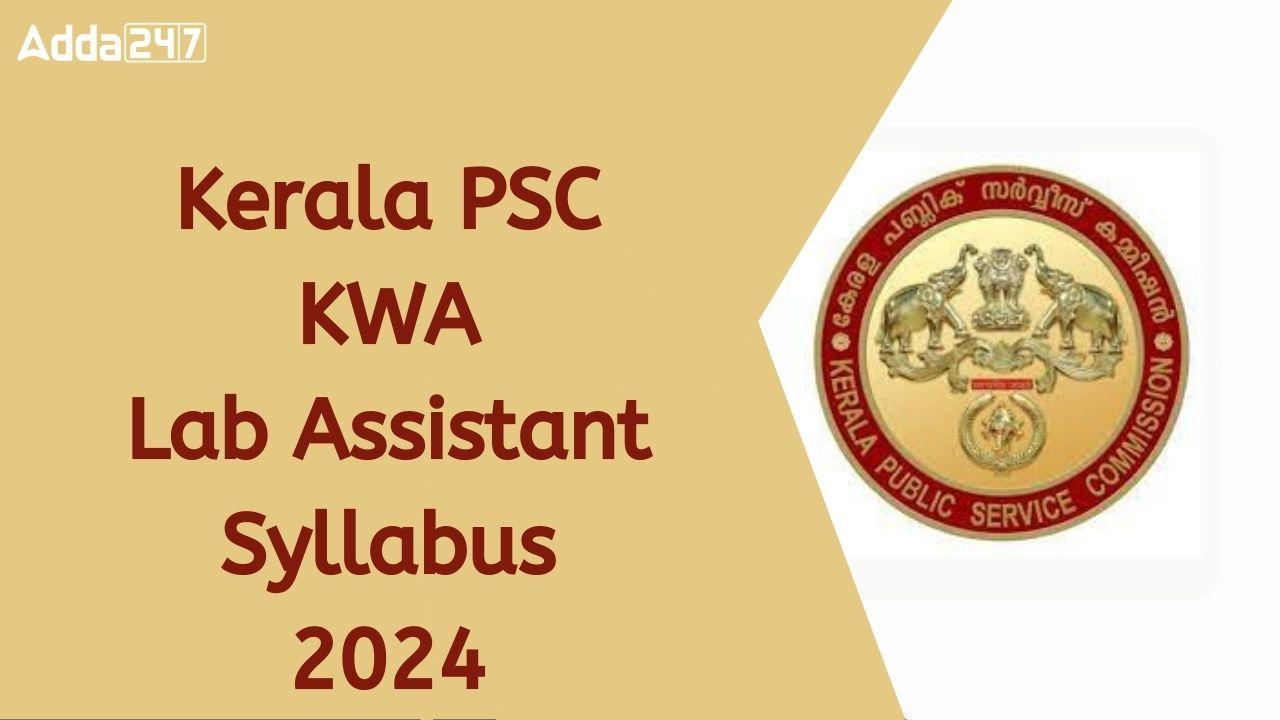

 PNB SO Syllabus 2025 and Exam Pattern, D...
PNB SO Syllabus 2025 and Exam Pattern, D...
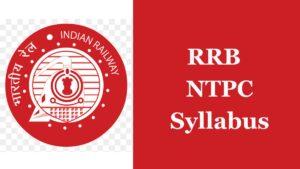 RRB NTPC Syllabus 2025, Download PDF for...
RRB NTPC Syllabus 2025, Download PDF for...
 Delhi Police Constable Syllabus 2025, Ex...
Delhi Police Constable Syllabus 2025, Ex...

